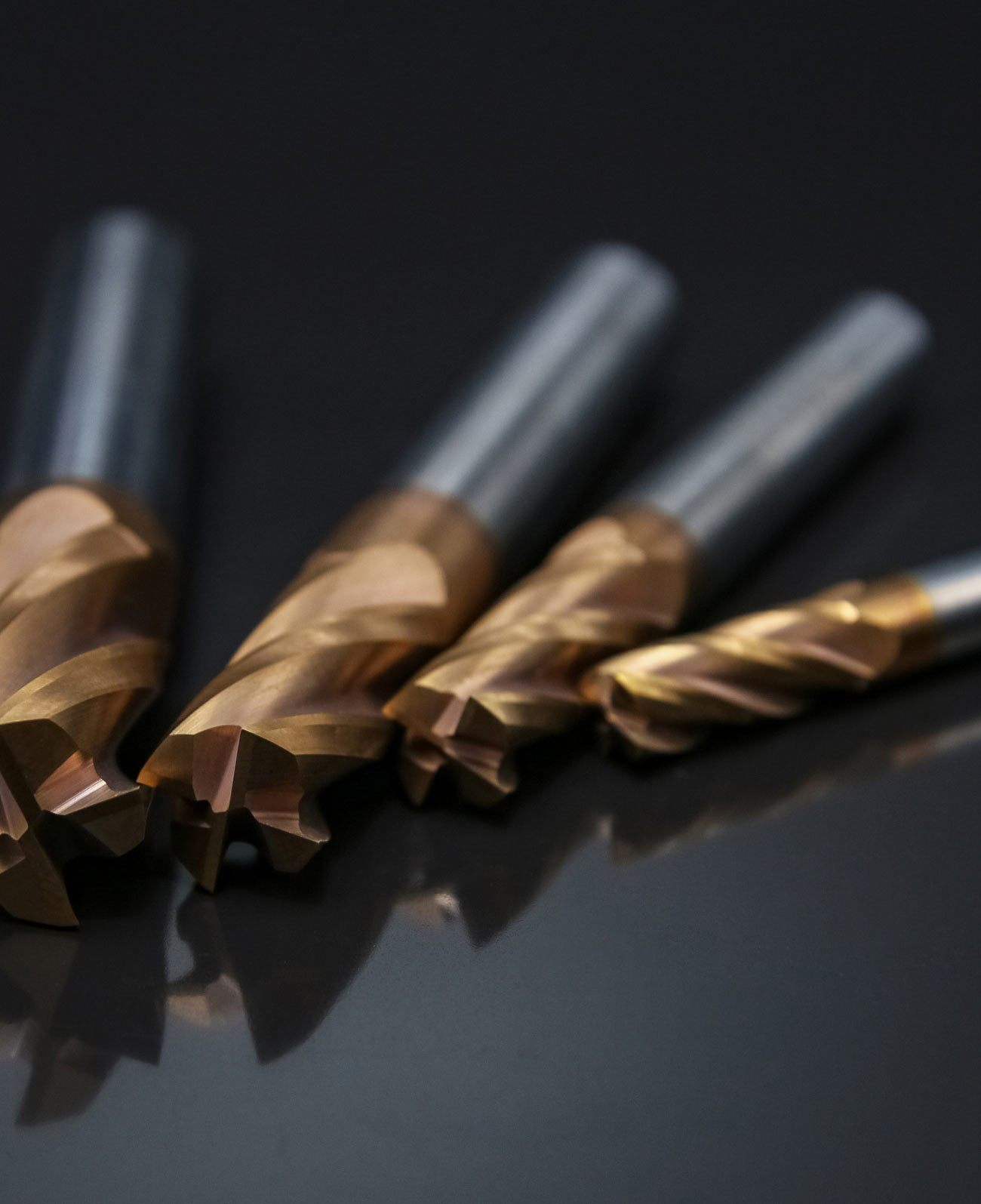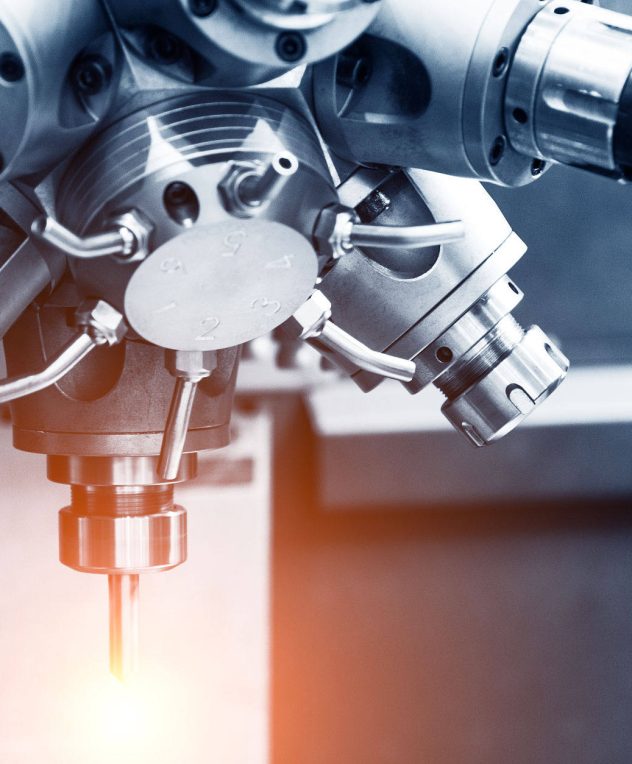
Contribution and Prospect of Precision Tool Manufacturing in Medical Field
Precision tools refer to tools that can be processed, measured, and detected at the micron or nanometer level. They are widely used in medical devices, medical imaging, medical diagnosis, and medical treatment. With the advancement of science and technology and the demand of the market, precision tool manufacturing has shown strong innovation capabilities and breakthrough achievements in the medical field, and has made important contributions to improving my country’s medical level and people’s health. This article will introduce the contribution and prospect of precision tool manufacturing in the medical field from the following aspects.
“The contribution and prospect of precision tool manufacturing in the field of medical devices”
Medical devices refer to instruments, equipment, utensils, materials and other products that can be used for human prevention, diagnosis, treatment, nursing or life support. They are an important part of medical services. According to the “Investment Analysis and Prospect Forecast Report of China’s Biomedical Materials Industry from 2017 to 2021”, the global biomaterials market has exceeded US$450 billion, with an annual growth rate of 15.8%, which fully reflects the strong vitality and broad development prospects of biomedical materials . my country’s biomedical materials industry started in the early 1980s. With the rapid development of domestic research and production, the industry has begun to take shape and has become a new industry. At present, the proportion of biomedical materials in medical devices has gradually increased, reaching more than 40%.
In order to meet the high requirements of medical devices in terms of performance, safety and reliability, precision tool manufacturing has played an important role in the field of medical devices. Precision tool manufacturing can not only improve the processing efficiency and quality of medical devices, reduce costs and energy consumption, but also realize the manufacture of complex structures and functions, and create new medical device products. For example:
Precision tool manufacturing uses advanced laser technology to realize rapid prototyping and precision machining of metals, ceramics, plastics and other materials, providing effective means for manufacturing various artificial joints, artificial bones, and dental restorations.
Precision tool manufacturing uses advanced ultrasonic technology to realize the layer-by-layer welding of metal wires or metal strips, providing an effective means for manufacturing various heart stents and vascular stents.
Precision tool manufacturing uses advanced electron beam technology to realize the layer-by-layer melting and solidification of metal powder, which provides an effective means for manufacturing various high-temperature alloys and ceramic matrix composite materials.
Medical devices refer to instruments, equipment, utensils, materials and other products that can be used for human prevention, diagnosis, treatment, nursing or life support. They are an important part of medical services. According to the “Investment Analysis and Prospect Forecast Report of China’s Biomedical Materials Industry from 2017 to 2021”, the global biomaterials market has exceeded US$450 billion, with an annual growth rate of 15.8%, which fully reflects the strong vitality and broad development prospects of biomedical materials . my country’s biomedical materials industry started in the early 1980s. With the rapid development of domestic research and production, the industry has begun to take shape and has become a new industry. At present, the proportion of biomedical materials in medical devices has gradually increased, reaching more than 40%.
In order to meet the high requirements of medical devices in terms of performance, safety and reliability, precision tool manufacturing has played an important role in the field of medical devices. Precision tool manufacturing can not only improve the processing efficiency and quality of medical devices, reduce costs and energy consumption, but also realize the manufacture of complex structures and functions, and create new medical device products. For example:
Precision tool manufacturing uses advanced laser technology to realize rapid prototyping and precision machining of metals, ceramics, plastics and other materials, providing effective means for manufacturing various artificial joints, artificial bones, and dental restorations.
Precision tool manufacturing uses advanced ultrasonic technology to realize the layer-by-layer welding of metal wires or metal strips, providing an effective means for manufacturing various heart stents and vascular stents.
Precision tool manufacturing uses advanced electron beam technology to realize the layer-by-layer melting and solidification of metal powder, which provides an effective means for manufacturing various high-temperature alloys and ceramic matrix composite materials.
Looking forward to the future, precision tool manufacturing still has huge development space and potential in the field of medical devices. With the continuous upgrading of medical devices, the requirements for precision tool manufacturing will also continue to increase. Precision tool manufacturing requires continuous innovation and optimization to adapt to the development trends of diversification, personalization, and intelligence of medical devices. At the same time, precision tool manufacturing also needs to be combined with other technologies, such as biotechnology, nanotechnology, information technology, etc., to achieve new functions and effects of medical devices.

The contribution and prospect of precision tool manufacturing in the field of medical imaging
Medical imaging refers to the technology of visually expressing the internal structure and function of the human body by using various physical principles and equipment. It is an important means of medical diagnosis and treatment. Common medical imaging techniques include X-ray, ultrasound, MRI, CT, PET, etc. Medical imaging technology plays a key role in improving diagnostic accuracy, reducing misdiagnosis rate, and guiding treatment plan.
Precision tool manufacturing plays an important role in the field of medical imaging. Precision tool manufacturing can not only improve the performance and quality of medical imaging equipment, reduce cost and energy consumption, but also realize the manufacture of new medical imaging equipment and create new medical imaging technology. For example:
Precision tool manufacturing uses advanced optical technology to realize the manufacture of optical coherence tomography (OCT), which provides an effective means for realizing high-resolution imaging of human tissue.
Precision tool manufacturing uses advanced micro-mechanical technology to realize the manufacture of miniature ultrasonic probes, which provides an effective means for realizing the imaging of tiny structures inside the human body.
Precision tool manufacturing uses advanced nanotechnology to realize the manufacture of nanoprobes, which provides an effective means for imaging human cells and molecules.
Medical imaging refers to the technology of visually expressing the internal structure and function of the human body by using various physical principles and equipment. It is an important means of medical diagnosis and treatment. Common medical imaging techniques include X-ray, ultrasound, MRI, CT, PET, etc. Medical imaging technology plays a key role in improving diagnostic accuracy, reducing misdiagnosis rate, and guiding treatment plan.
Precision tool manufacturing plays an important role in the field of medical imaging. Precision tool manufacturing can not only improve the performance and quality of medical imaging equipment, reduce cost and energy consumption, but also realize the manufacture of new medical imaging equipment and create new medical imaging technology. For example:
Precision tool manufacturing uses advanced optical technology to realize the manufacture of optical coherence tomography (OCT), which provides an effective means for realizing high-resolution imaging of human tissue.
Precision tool manufacturing uses advanced micro-mechanical technology to realize the manufacture of miniature ultrasonic probes, which provides an effective means for realizing the imaging of tiny structures inside the human body.
Medical imaging refers to the technology of visually expressing the internal structure and function of the human body by using various physical principles and equipment. It is an important means of medical diagnosis and treatment. Common medical imaging techniques include X-ray, ultrasound, MRI, CT, PET, etc. Medical imaging technology plays a key role in improving diagnostic accuracy, reducing misdiagnosis rate, and guiding treatment plan.
Precision tool manufacturing plays an important role in the field of medical imaging. Precision tool manufacturing can not only improve the performance and quality of medical imaging equipment, reduce cost and energy consumption, but also realize the manufacture of new medical imaging equipment and create new medical imaging technology. For example:
Precision tool manufacturing uses advanced optical technology to realize the manufacture of optical coherence tomography (OCT), which provides an effective means for realizing high-resolution imaging of human tissue.
Precision tool manufacturing uses advanced micro-mechanical technology to realize the manufacture of miniature ultrasonic probes, which provides an effective means for realizing the imaging of tiny structures inside the human body.
Precision tool manufacturing uses advanced nanotechnology to realize the manufacture of nanoprobes, which provides an effective means for imaging human cells and molecules.
Looking into the future, precision tool manufacturing still has huge development space and potential in the field of medical imaging. With the continuous advancement of medical imaging technology, the requirements for precision tool manufacturing will also continue to increase. Precision tool manufacturing requires continuous innovation and optimization to adapt to the development trends of high-definition, high-sensitivity, and multi-modal medical imaging technology. At the same time, precision tool manufacturing also needs to be combined with other technologies, such as artificial intelligence, cloud computing, and big data, to achieve intelligent analysis and processing of medical imaging data.
Looking into the future, precision tool manufacturing still has huge development space and potential in the field of medical imaging. With the continuous advancement of medical imaging technology, the requirements for precision tool manufacturing will also continue to increase. Precision tool manufacturing requires continuous innovation and optimization to adapt to the development trends of high-definition, high-sensitivity, and multi-modal medical imaging technology. At the same time, precision tool manufacturing also needs to be combined with other technologies, such as artificial intelligence, cloud computing, and big data, to achieve intelligent analysis and processing of medical imaging data.

The contribution and prospect of precision tool manufacturing in the field of medical diagnosis
Medical diagnosis refers to the process of detecting, analyzing and judging human diseases by using various methods and means. It is the premise and basis of medical treatment. Common medical diagnostic methods include laboratory tests, immunology, genes, and endoscopy. Medical diagnostic methods play an important role in improving early detection of diseases, early treatment, and prevention of recurrence.
Precision tool manufacturing plays an important role in the field of medical diagnostics. Precision tool manufacturing can not only improve the performance and quality of medical diagnostic equipment, reduce cost and energy consumption, but also realize the manufacture of new medical diagnostic equipment and create new medical diagnostic methods. For example:
Precision tool manufacturing uses advanced microfluidic technology to realize the manufacture of microfluidic chips, which provides an effective means for the microanalysis of human body fluids.
Precision tool manufacturing uses advanced biosensing technology to realize the manufacture of biosensors, which provides an effective means for the rapid detection of human biomarkers.
Precision tool manufacturing uses advanced molecular diagnostic technology to realize the manufacture of molecular diagnostic instruments, which provides an effective means for the precise diagnosis of human genes and epigenetics.
Looking into the future, precision tool manufacturing still has huge development space and potential in the field of medical diagnosis. With the continuous improvement of medical diagnostic technology, the requirements for precision tool manufacturing will also continue to increase. Precision tool manufacturing requires continuous innovation and optimization to adapt to the development trends of high efficiency, high flexibility, and high accuracy in medical diagnostic technology. At the same time, precision tool manufacturing also needs to be combined with other technologies, such as the Internet of Things, blockchain, 5G, etc., to realize the secure transmission and sharing of medical diagnostic data.
Medical diagnosis refers to the process of detecting, analyzing and judging human diseases by using various methods and means. It is the premise and basis of medical treatment. Common medical diagnostic methods include laboratory tests, immunology, genes, and endoscopy. Medical diagnostic methods play an important role in improving early detection of diseases, early treatment, and prevention of recurrence.
Precision tool manufacturing plays an important role in the field of medical diagnostics. Precision tool manufacturing can not only improve the performance and quality of medical diagnostic equipment, reduce cost and energy consumption, but also realize the manufacture of new medical diagnostic equipment and create new medical diagnostic methods. For example:
Precision tool manufacturing uses advanced microfluidic technology to realize the manufacture of microfluidic chips, which provides an effective means for the microanalysis of human body fluids.
Precision tool manufacturing uses advanced biosensing technology to realize the manufacture of biosensors, which provides an effective means for the rapid detection of human biomarkers.
Precision tool manufacturing uses advanced molecular diagnostic technology to realize the manufacture of molecular diagnostic instruments, which provides an effective means for the precise diagnosis of human genes and epigenetics.
Looking into the future, precision tool manufacturing still has huge development space and potential in the field of medical diagnosis. With the continuous improvement of medical diagnostic technology, the requirements for precision tool manufacturing will also continue to increase. Precision tool manufacturing requires continuous innovation and optimization to adapt to the development trends of high efficiency, high flexibility, and high accuracy in medical diagnostic technology. At the same time, precision tool manufacturing also needs to be combined with other technologies, such as the Internet of Things, blockchain, 5G, etc., to realize the secure transmission and sharing of medical diagnostic data.
In short, precision tool manufacturing has demonstrated strong innovation capabilities and breakthrough achievements in the medical field, and has made important contributions to improving my country’s medical level and people’s health. Precision tool manufacturing enterprises should seize opportunities, overcome challenges, continuously improve technical level and product quality, and contribute more to the development of my country’s medical field.







Leave a Reply